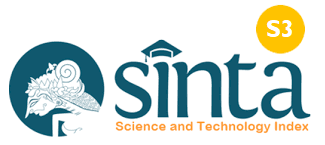Pengaruh Model Pembelajaran Inkuiri Terbimbing Berorientasi Tri Kaya Parisudha Terhadap Motivasi Dan Hasil Belajar IPAS Siswa Kelas VI Gugus II Kecamatan Klungkung
DOI:
https://doi.org/10.37329/cetta.v8i4.4492Keywords:
Guided Inquiry, Tri Kaya Parisudha, Learning Motivation, Learning OutcomesAbstract
The issue of low motivation and learning outcomes in IPAS among sixth-grade students highlights the need for the implementation of an effective and character-based learning model, one of which is the Guided Inquiry model oriented towards Tri Kaya Parisudha. This study aims to determine the influence of the Guided Inquiry Learning Model oriented toward Tri Kaya Parisudha on motivation and IPAS learning outcomes of sixth-grade students in Cluster II of Klungkung District. This is a quasi-experimental study with a population consisting of all sixth-grade students in Cluster II of Klungkung District, totaling 196 students. The sample was selected using a random sampling technique. The sample of this study consisted of two classes: 33 students from SD Negeri 2 Akah as the experimental group and 32 students from SD Negeri 2 Semarapura Kangin as the control group. The research procedure involved three stages: preparation, implementation, and final phase of the experiment. Data were analyzed using MANOVA statistical testing. The results showed that: (1) there was a significant difference in learning motivation between students who followed the Guided Inquiry Learning Model oriented toward Tri Kaya Parisudha and those who followed conventional learning methods, with F = 143,864 and P<0,05; (2) there was a significant difference in IPAS learning outcomes between students taught using the Guided Inquiry Learning Model oriented toward Tri Kaya Parisudha and those taught using conventional methods, with F = 21,490 and P<0,05; (3) the implementation of the Guided Inquiry Learning Model oriented toward Tri Kaya Parisudha significantly influenced both motivation and IPAS learning outcomes of sixth-grade students in Cluster II of Klungkung District, with F = 74,030 and P<0,05.
References
Agung, A. A. G. (2011). Metodologi Penelitian Pendidikan. Singaraja: Universitas Pendidikan Ganesha.
Dewi, C., Utami, L., & Octarya, Z. (2020). Pengaruh Model Pembelajaran Inkuiri Terbimbing Integrasi Peer Instruction terhadap Kemampuan Berpikir Kritis Siswa SMA pada Materi Laju Reaksi. Journal of Natural Science and Integration, 3(2), 196-204.
Hani, N., Asep, & Gusrayani, D. (2016). Pengaruh Model Pembelajaran Inkuiri Terbimbing Terhadap Kemampuan Berpikir Kritis Siswa Pada Materi Energi Bunyi. Jurnal Pena Ilmiah, 1(1)
Novi, M., & Johar, A. (2023). Strategi Meningkatkan Motivasi Belajar Siswa. Bayumas: Rizquna.
Purnawati, L., & Damayani, A. T. (2019). Pengaruh Model Pembelajaran Inkuiri Terbimbing Terhadap Hasil Belajar Siswa Pada Materi Macam-Macam Gaya. Journal For Lesson and Learning Studies, 2(1), 64-72.
Salma, F., Distrik, W., & Wahyudi, I. (2019). Pengaruh Model Pembelajaran Inkuiri Terbimbing Berbantukan Buku Siswa Berbasis Pendekatan Terpadu STEM Terhadap Hasil Belajar. JPF (Jurnal Pendidikan Fisika) FKIP UM Metro, 7(1), 15-27.
Sugiyono, D. (2015). Metode Penelitian Pendidikan: Pendekatan Kuantitatif, Kualitatif, dan R&D. Bandung: Alfabeta.
Sukardi, M. (2003). Metodologi Penelitian Pendidikan: Kompetensi dan Praktiknya. Jakarta: Bumi Aksara.
Setiani, T., Supangat, & Pravitasari, D. (2022). Pengaruh Model Pembelajaran Inkuiri Terbimbing terhadap Keaktifan Belajar Siswa di Sekolah Dasar. Journal of Elementary School, 1(1) 1-10.
Undang-Undang Republik Indonesia No. 20 Tahun 2003 Tentang Sistem Pendidikan Nasional (2003). Bandung: Fokus Media.
Downloads
Published
How to Cite
Issue
Section
License
Copyright (c) 2025 I Gusti Ayu Komang Lili Absari

This work is licensed under a Creative Commons Attribution-ShareAlike 4.0 International License.
An author who publishes in the Cetta : Jurnal Ilmu Pendidikan agrees to the following terms:
- Author retains the copyright and grants the journal the right of first publication of the work simultaneously licensed under the Creative Commons Attribution-ShareAlike 4.0 License that allows others to share the work with an acknowledgement of the work's authorship and initial publication in this journal
- Author is able to enter into separate, additional contractual arrangements for the non-exclusive distribution of the journal's published version of the work (e.g., post it to an institutional repository or publish it in a book) with the acknowledgement of its initial publication in this journal.
- Author is permitted and encouraged to post his/her work online (e.g., in institutional repositories or on their website) prior to and during the submission process, as it can lead to productive exchanges, as well as earlier and greater citation of the published work (See The Effect of Open Access).
Read more about the Creative Commons Attribution-ShareAlike 4.0 Licence here: https://creativecommons.org/licenses/by-sa/4.0/.





